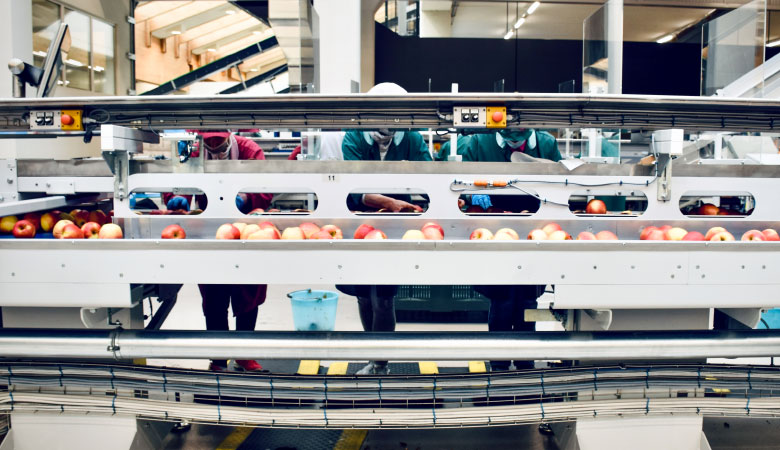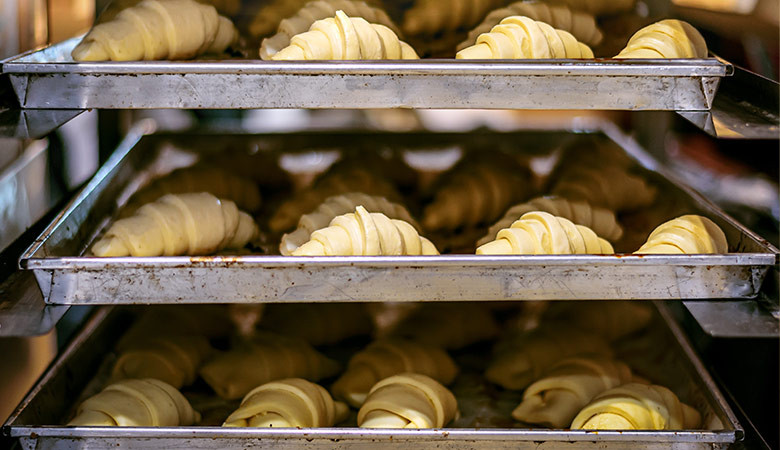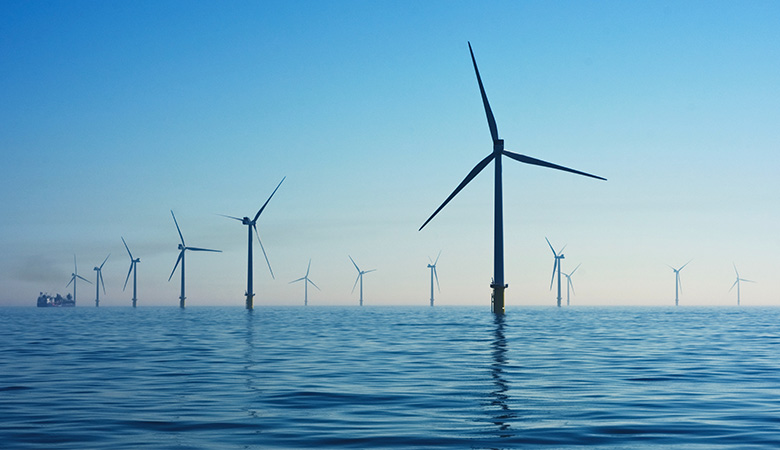Durabilité / Articles
Comment économiser de l’énergie : 12 astuces pour les entreprises du secteur alimentaire
L’alerte a été donnée par les principaux spécialistes du monde entier : les ressources naturelles s’épuisent et ne suffisent plus.

 18 minutes de lecture
18 minutes de lecture
2022-07-21 11:23:39
L’alerte a été donnée par les principaux spécialistes du monde entier : les ressources naturelles s’épuisent et ne suffisent plus à l’utilisation massive des industries. En outre, la consommation énergétique a des conséquences pour un autre bien rare – la trésorerie des entreprises. Découvrez comment économiser de l’énergie (et de l’argent) avec 12 conseils pratiques.
Pourquoi est-ce si important de réduire la consommation énergétique dans l’industrie alimentaire ?
Selon les données de The Food and Agriculture Organization, on estime que l’industrie alimentaire consomme 30 % de l’énergie mondiale, étant responsable de 20 % des émissions de gaz à effet de serre.
Ces chiffres sont encore plus inquiétants si l’on tient compte d’une autre donnée fournie par United Nations World Population Prospects : il est prévu que la population mondiale dépasse les 9 milliards d’habitants d’ici 2050.
Afin de répondre à besoin croissant de consommation énergétique, il est nécessaire d’augmenter la production, ce qui implique une dépense d’énergie plus importante. Ce panorama mondial, allié à la nécessité de pallier aux changements climatiques, constitue un important et urgent défi énergétique – la production d’électricité ne suit pas cette même vitesse et les sources traditionnelles sont limitées. Économiser de l’énergie est donc une manière de réduire les dépenses professionnelles et la de plus en plus inquiétante empreinte carbone.
Et le préjudice n’est pas seulement pour l’environnement. En moyenne, l’électricité représente 15 % des coûts opérationnels des entreprises du secteur alimentaire, ce qui fait de l’efficacité énergétique une priorité pour toute société, avec un impact élevé sur les marges.
DÉPENSES D’ÉLECTRICITÉ POUR 0,093 MÈTRES CARRÉS

Aux États-Unis, le coût moyen de l’électricité dans les bâtiments industriels est de 2,10 dollars par square foot (soit 0,09 mètres carrés). Mais dans les secteurs de food service, ce coût atteint plus du double pour la même surface.
La bonne nouvelle est que de nombreuses mesures sont mises à la disposition des entreprises afin de réduire leur empreinte carbone et leur consommation d’énergie très simplement. Selon des études, le simple fait de mesurer régulièrement la consommation énergétique permet de réduire la consommation de près de 10 %. Et ce n’est que le début.
12 astuces pour économiser l’énergie dans les entreprises du secteur alimentaire
Économiser de l’énergie dans les entreprises du secteur alimentaire est plus simple qu’il n’y paraît. Avec ces 12 conseils, vous pourrez réduire considérablement votre consommation énergétique.
1. Évaluez la consommation d’énergie de vos installations
La première étape pour économiser de l’électricité est de savoir où et comment elle est consommée. Vous pouvez utiliser des modèles de contrôle simple ou, si vos installations sont dotées de divers équipements industriels et processus, vous pourrez demander une évaluation extérieure de l’efficacité énergétique, afin d’identifier facilement les points d’économie potentiels.
Ces services permettent non seulement de déterminer la quantité exacte d’énergie consommée dans les différents secteurs (et même sur les composants individuels), mais également d’obtenir plus de données sur les manières les plus efficaces de mettre en œuvre des mesures d’efficacité énergétique.
2. Améliorez l’efficacité des systèmes de réfrigération et de température contrôlée
Les systèmes de réfrigération et de température contrôlée représentant généralement le poste le plus important de consommation énergétique au sein de l’industrie alimentaire, ils méritent donc une attention particulière en termes d’efforts d’économie d’énergie.
Les échangeurs de chaleur sont des équipements essentiels pour réchauffer ou refroidir des aliments, rendant plus aptes à la consommation. Privilégiez des modèles assurant un transfert efficace de la chaleur entre des fluides à faible vitesse de flux, haute efficacité thermique et basse consommation énergétique.
La même logique s’applique aux systèmes de réfrigération. Optez pour des technologies plus efficaces, qui garantissent une parfaite conservation des aliments à un moindre coût énergétique. Et si, dans un cas précis, moins d’heures de froid sont nécessaires dans une journée ou si le rythme de production est moins intense, prévoyez de réduire le niveau de fonctionnement du système de réfrigération à ces moments-là.
3. Utilisez des équipements efficaces
La majeure partie de la consommation énergétique d’une entreprise provient de son parc de machines. Pour économiser de l’énergie, il est essentiel de choisir des équipements plus efficaces, plus respectueux de l’environnement et à basse consommation. L’économie qui en découle va au-delà de l’énergie ; les modèles efficaces peuvent également prolonger la durée de vie utile des appareils et permettre un rythme de travail plus efficace.
Un bon exemple de ce type d’équipements est la MultiWasher, une machine de lavage industriel hautement performante. Cet appareil a recours à la technologie la plus récente pour adapter les paramètres de lavage en fonction du chargement à laver, ce qui se traduit par une économie de près de 70 % par rapport aux appareils de lavage traditionnels.
4. Optimisez les opérations à vitesse variable
Il est courant de trouver des équipements électriques qui utilisent plus d’énergie que nécessaire pour réaliser une certaine tâche. Par exemple, une pompe à chaleur peut fonctionner en permanence à une intensité maximale, travaillant plus que requis.
En utilisant des processus d’automation à régulateur de vitesse, vous pourrez contrôler le rythme, l’intensité et le couple du moteur électrique, permettant ainsi à certains processus d’opérer de manière partielle ou à des vitesses différentes. Cela peut constituer une augmentation de l’efficacité énergétique de l’ordre de 25 %, avec un impact positif sur l’ensemble de la chaîne de production. Prévoir des variateurs de vitesse sur vos équipements électriques est donc une solution pour votre entreprise.
5. Utilisez des sources d’énergie alternatives dès que possible
Envisagez la possibilité d’avoir recours à des sources d’énergie plus durables et respectueuses de l’environnement. L’une des méthodes les plus courantes de contrôle de ces coûts consiste à installer des panneaux solaires, de manière à tirer profit d’une source d’énergie gratuite et inépuisable : le soleil.
Les avantages vont au-delà de l’économie d’énergie. Les clients ne privilégient pas seulement la qualité des aliments mais cherchent de plus en plus à s’identifier aux marques responsables d’un point de vue environnemental.
6. Utilisez des systèmes d’éclairage à haute efficacité énergétique
Remplacer les ampoules traditionnelles par des LED réduit considérablement les dépenses d’électricité tout en éclairant – parfois jusqu’à 75 %. La technologie LED consomme moins, requiert moins de maintenance et produit une lumière plus froide et brillante, idéale pour les grands espaces. En outre, elle dure jusqu’à 10 fois plus longtemps que les systèmes traditionnels. En dépit de tous ces avantages, le pourcentage d’entreprises ayant recours à ce type d’éclairage est encore résiduel. Dans des pays comme le Royaume-Uni, seules 20 % des entreprises ont adopté un éclairage LED..
Prévoyez donc une vérification complète et exhaustive de l’ensemble des sources d’éclairage de vos installations, autant intérieures qu’extérieures, et envisagez d’échanger vos ampoules traditionnelles contre des ampoules LED.
7. Trouvez des manières de réduire l’utilisation de la chaleur
Il est possible que votre entreprise produise plus de chaleur que nécessaire. Par exemple, l’eau chaude n’est pas toujours indispensable pour certaines opérations. Pour cela, vous pouvez compter sur des thermostats intelligents, qui aident à régler la température en fonction des besoins réels du moment et ainsi optimiser l’énergie. Une solution de désinfection chimique à l’eau froide peut exiger près de 6000 W pour fonctionner, tandis qu’un désinfectant à l’eau chaude en consommera quatre fois plus pour la même fonction.
Il est également possible de diminuer la température de l’eau en utilisant des machines de lavage. Vérifiez quelles sont les températures obligatoires de lavage dans votre industrie et procédez aux optimisations nécessaires pour éviter de consommer plus d’eau chaude que nécessaire. Vous pourrez facilement atteindre cet objectif grâce à la MultiWasher, notre machine de lavage industriel qui adapte tous les paramètres nécessaires à une hygiénisation parfaite (y compris la température de l’eau) de manière à ne les utiliser qu’à leur juste mesure.
8. Réduisez la température ambiante au sein de vos installations
Ce conseil est particulièrement utile pour les cuisines industrielles. L’utilisation de fourneaux, de fours et autres équipements générateurs de chaleur augmente la température ambiante dans la cuisine, obligeant ainsi à fournir un effort de réfrigération plus important pour maintenir les aliments à une certaine température.
Privilégiez donc les équipements fonctionnant sans flammes, comme ceux à induction, qui permettent de transférer de la chaleur sans chauffer l’air environnant. En outre, placez toujours des hottes aspirantes au-dessus des équipements diffusant de la vapeur, afin d’éliminer l’air chaud. Le conseil précédent concernant l’utilisation d’ampoules LED présente également ici des avantages, en ne diffusant pas autant de chaleur que les ampoules traditionnelles.
9. Débranchez les appareils non utilisés
Ce geste peut sembler simple et anodin, mais le fait d’éteindre la lumière peut représenter d’importantes économies, tout en évitant une consommation inutile. Vérifiez donc que vos équipements restent allumés en veille et débranchez ceux qui ne sont pas utilisés.
Afin de ne pas avoir à vous en soucier en permanence, vous pourrez avoir recours à des minuteurs ou des contrôleurs intelligents pour allumer ou éteindre des appareils à distance. Dans les espaces extérieurs, l’éclairage peut être activé par le biais de capteurs de présence, évitant ainsi toute consommation inutile. De même, les fours ou les friteuses, par exemple, peuvent être débranchés pendant les périodes d’inactivité.
10. Rendez la disposition de votre cuisine plus efficace
La disposition des équipements est également un facteur essentiel en matière d’économie d’énergie. Placez vos appareils de réfrigération de manière à avoir suffisamment d’espace pour évacuer et libérer l’air chaud. En l’absence d’une aération correcte, l’unité gaspillera plus d’énergie pour maintenir la température de réfrigération.
Pensez également à séparer les équipements de réfrigération de ceux de chauffage. Si le four se situe à proximité d’un congélateur, la température ambiante augmentera et le congélateur ne fonctionnera pas efficacement.
11. Assurez une maintenance régulière des équipements
L’entretien et la maintenance régulière de tous les équipements sont primordiaux pour éviter tout effort inutile et une consommation d’énergie supérieure à celle strictement nécessaire. Il existe des actions préventives que vous pouvez mettre en œuvre afin de prolonger la durée de vie utile des équipements et ainsi augmenter les économies d’énergie.
Pensez donc à inspecter régulièrement vos installations afin de détecter d’éventuelles fuites, pertes d’isolation ou dommages pouvant compromettre un fonctionnement idéal. Gardez les bobines des condensateurs propres, afin d’éviter l’accumulation de résidus qui rendent le fonctionnement plus ardu et augmentent la consommation énergétique.
Le même conseil s’applique aux filtres à eau – ils doivent être remplacés selon les recommandations de la marque, afin d’empêcher la formation de calcaire, de prévenir l’obstruction des composants et d’éviter de compromettre l’efficacité de l’équipement.
12. Mettez en œuvre une culture de l’efficacité énergétique
Outre le fait d’optimiser les conditions physiques, environnementales et opérationnelles dans un souci de meilleure efficacité énergétique, il est également important de sensibiliser vos collaborateurs à s’adapter directement aux changements apportés. Dans le cas contraire, les mesures mises en œuvre n’auront pas l’effet escompté.
Organisez des séances de formation sur l’importance des actions durables et dispensez des instructions spécifiques sur la manière dont celles-ci seront intégrées au nouveau mode de fonctionnement. Il pourra également être utile d’afficher certains pense-bêtes à des endroits stratégiques, afin d’aider les équipes à adopter les conduites souhaitées.
La MultiWasher, votre meilleure alliée pour économiser de l’énergie
Les mesures nécessaires pour obtenir une meilleure durabilité d’entreprise au sein de l’industrie alimentaire deviennent plus simples et efficaces en choisissant les équipements idéaux, qui travaillent pour vous.
C’est le cas de la MultiWasher, produit de la plus récente technologie, inspirée des urgences énergétiques et climatiques. Grâce à cet équipement, il est possible de désinfecter de manière irréprochable tout ustensile, outil ou équipement, en utilisant des quantités minimales d’énergie. Cette machine règle la température (et la quantité) d’eau en fonction des besoins réels du moment, évitant ainsi toute consommation inutile. Les entreprises du secteur alimentaire qui l’ont déjà adoptée commencent à en observer les bénéfices mesurables, que ce soit au niveau des économies d’énergie que de l’efficacité du lavage. Contactez-nous pour observer la MultiWasher en action, sans engagement et vérifiez par vous-même ses hautes performances.
Tu pourrais aimer

Durabilité / Articles
Lavage par décarbonisation : comment procéder de manière efficace
Le secret d'un lavage plus sûr et plus efficace ? Décarbonisation. Apprenez ce que c'est et pourquoi c'est essentiel pour votre entreprise.
Publié dans 2021-07-27

Durabilité / Articles
Le gaspillage alimentaire : 7 astuces pour l’éviter
Le gaspillage alimentaire met des millions de personnes en danger, représente des pertes financières et favorise le dérèglement climatique. Décou...
Publié dans 2022-08-10

Durabilité / Articles
La neutralité carbone : que signifie-t-elle et comment y contribuer
La durabilité est une bonne affaire. Découvrez ce que signifie la neutralité carbone, quels en sont les avantages et comment votre entreprise peu...
Publié dans 2023-03-02






















 Portugal
Portugal United Kingdom
United Kingdom United States
United States France
France Spain
Spain Germany
Germany Romania
Romania Italy
Italy Czech Republic
Czech Republic Finland
Finland Hungary
Hungary Slovakia
Slovakia Greece
Greece Lithuania
Lithuania South Korea
South Korea Russia
Russia Saudi Arabia
Saudi Arabia Poland
Poland Brasil
Brasil Hebrew
Hebrew